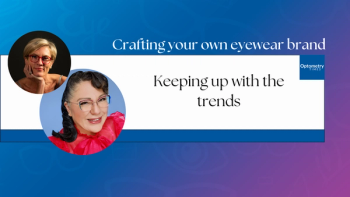
FDA approved LENZ Therapeutics’ VIZZ for the treatment of presbyopia
Vizz (LENZ Therapeutics) is the first and only aceclidine-based eye drop for presbyopia and is also the first daily solution to correct vision for up to 10 hours.
LENZ Therapeutics has announced that the FDA has approved its formulation of aceclidine 1.44% for the correction of near vision in adults with
LENZ expects to begin shipping samples as soon as October 2025 and the commercial product launch will soon follow with a broad rollout planned for mid-Q4 2025.
“The FDA approval of VIZZ is a defining moment for LENZ and represents a transformative improvement in the available treatment options for the 128 million adults living with blurry near vision in the United States. We are ready and excited to launch the first and only once-daily eye drop with proven efficacy for up to 10 hours into the market,” Eef Schimmelpennink, President and Chief Executive Officer of LENZ Therapeutics, said in a press release. “This significant milestone is the result of tremendous commitment and collaboration by the LENZ team and our partners, the dedication of our clinical investigators, and the contributions of hundreds of participants in our clinical trials. I want to thank each of them for their role in getting VIZZ FDA approved.”
Aceclidine features a pupil-selective miotic that interacts with the iris and minimizes ciliary muscle stimulation to create a pinhole effect, which results in a sub-2 mm pupil to extend depth of focus and improve near vision without causing myopic shift. Both clinical trials achieved all primary and secondary end points, and the trials demonstrated that the drop could improve near vision within 30 minutes and for up to 10 hours.
“This FDA approval represents a disruptive paradigm shift in treatment options for millions of people who are frustrated and struggling with the inevitable age-related loss of their near vision,” clinical investigator Marc Bloomenstein, OD, FAAO, said in a press release. “I believe this will be a welcome solution for both optometrists and ophthalmologists who will now be able to offer a highly effective and sought-after presbyopia treatment that could immediately become the standard of care, with a product profile that will meet our patients’ needs.”
Bloomenstein spoke to Optometry Times about the phase 3 data for aceclidine 1.44% at Optometry’s Meeting in Minneapolis, Minnesota2 You can hear
Clarity clinical trials
LENZ Therapeutics
Clarity 1 and Clarity 2 investigated the safety and efficacy of aceclidine 1.44% in 466 participants dosed once daily for 42 days; meanwhile, Clarity 3 evaluated the long-term safety of the drop across 6 months of once-daily dosing in 217 patients. All primary and secondary end points were reached across Clarity 1 and 2, and the drop produced consistent near vision improvements across both trials. The formulation was well-tolerated and no serious treatment-related adverse events were observed across all 3 trials. The most commonly reported adverse events include irritation at the instillation site (20%), dim vision (16%), and headache (13%). Less commonly, some patients experienced conjunctival hyperemia (8%) and ocular hyperemia (7%). LENZ reported that most adverse events were mild, transient, and self-resolving.
More information, including full prescribing information, can be found on the
Reference
- LENZ Therapeutics Announces US FDA Approval of VIZZ™ for the Treatment of Presbyopia. Press release. LENZ Therapeutics. Published July 31, 2025. Accessed July 31, 2025.
https://ir.lenz-tx.com/news-events/press-releases/detail/39/lenz-therapeutics-announces-us-fda-approval-of-vizz-for-the-treatment-of-presbyopia - AOA 2025: LNZ100 clinical trial insights from Dr Marc Bloomenstein. Optometry Times. Published July 11, 2025. Accessed July 31, 2025.
https://www.optometrytimes.com/view/aoa-2025-lnz-100-clinical-trial-insights-from-dr-marc-bloomenstein - LENZ Therapeutics submits NDA for LNZ100 for the treatment of presbyopia. Optometry Times. Published August 12, 2024. Accessed July 31, 2025.
https://www.optometrytimes.com/view/lenz-therapeutics-submits-nda-for-lnz100-for-the-treatment-of-presbyopia - US FDA accepts NDA for LENZ Therapeutics' LNZ100 for the treatment of presbyopia. Optometry Times. Published October 24, 2024. Accessed July 31, 2025.
https://www.optometrytimes.com/view/us-fda-approves-nda-for-lenz-therapeutics-lnz100-for-the-treatment-of-presbyopia
Newsletter
Want more insights like this? Subscribe to Optometry Times and get clinical pearls and practice tips delivered straight to your inbox.









































